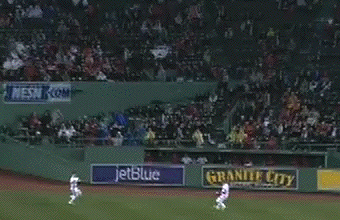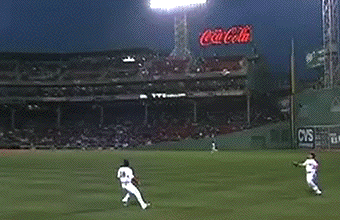A Mets legend 13 years before putting on the uniform

I’ve been a big fan of Rick Ankiel since 2000 for two rather contradictory reasons. The first is because I managed to pull not one but two of his autograph cards from 2000 SPX. Numbered to 1500 (which was what passed for limited in those days), the Rookie / Young Star autographs in SPX were tough pulls. To get two of the same autograph from a few packs was quite unlikely, but for them to be from one of the hottest rookies in the game? That was just amazing. Ankiel would go on to finish second in Rookie of the Year voting with a bright future ahead of him and solid value in his cards.
The second reason I am fond of Rick Ankiel undid the first. TINSTAAPP. Look it up. While the regular season validated Ankiel’s top prospect status (he was ranked #1 by Baseball America going into the 2000 season), everything fell apart in the postseason. In Game 1 of the NLDS, he lasted only 2 2/3 innings against the Braves and gave up 4 runs. The Cardinals took the series and eliminated the team that had knocked the Mets out of the postseason in 1999, seemingly clearing a path for the Mets to go to the World Series. All that stood in their way were the Cardinals, with Ankiel set to start Game 2 and get a shot at redemption.
There are two things I remember most clearly about the Mets in the postseason back in those days. The first is Robin Ventura’s 15th inning grand slam single in 1999. The second is the first inning of Game 2 of the 2000 NLCS. Ankiel started off with a full count strikeout and then the wheels fell off. A full count walk, a wild pitch, and a second full count walk on a second wild pitch put runners at the corners for Todd Zeile, who hit a sac fly on, you guessed it, a full count. Robin Ventura broke the streak with a four pitch walk and Benny Agbayani got impatient and hit an RBI double before he could be issued his three balls. That would do it for Ankiel, who somehow gave up only two runs in his second postseason meltdown. He got one more chance to turn things around in Game 5, coming in to start the 7th inning of what would be the 7-0 blowout clincher for the Mets. That went about as well as his previous outing – one strikeout, two walks, two wild pitches, and one run in 2/3 of an inning.
As a fan of the Mets, I always like to see them walk (literally in this case) all over their opponent. As a fan of baseball though, I hate to see a career implode as suddenly as Ankiel’s did in October 2000. Ankiel would pitch just 34 more innings in the majors between 2001 and 2004 before it was clear that his postseason performance was no fluke. Rick Ankiel the pitcher was done.
This would not be the end for Rick Ankiel. Starting back at the bottom of the Cardinals’ system, he used his strong arm and decent bat (for a pitcher) to transform himself into an outfielder. In 2007, he made his return to the majors as a slightly better than replacement-level hitter. After six years spent between the Cardinals, Royals, Braves, and Nationals, Ankiel hit bottom and signed with the Astros for the 2013 season, appearing in 25 games before being released. By the Astros. There was nowhere left to go.
And then he signed with the Mets on May 13. Rick Ankiel, replacement-level outfielder who wasn’t good enough to play on the 2013 Houston Astros, was eagerly snapped up by the Mets to patch up their sinking ship of an outfield. You’ll have to excuse me if I’m not jumping for joy over this move. But hey, at least those autographs count as part of my Mets collection now. And with a major league career spanning nearly a decade and a half, he must have a lot of interesting game-used cards, right?

Eh, not quite. The bulk of his game-used cards are bat or white/gray jersey cards from 2000-2002. He does have some blue mesh Team USA jersey swatches, a few Cardinals patch cards, and at least one game-used shoe card. Beyond that, we have to dig down to game-used base cards and game-used dirt cards. Seriously. There were a few more boring jersey cards in 2009 and 2010, then nothing. Rick Ankiel hasn’t been relevant in years. Welcome to the Mets.






















Recent Comments